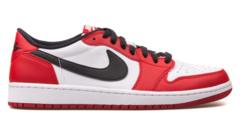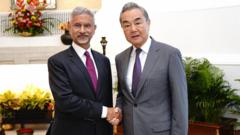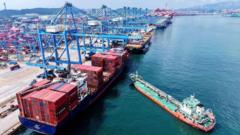Nike's dependence on overseas production places it at risk of tariff hikes, likely resulting in increased prices for consumers. Analysts weigh in on strategies the company may employ to manage costs amid fluctuating tariffs.**
The Impact of Tariffs on Nike's Sneaker Prices: What Consumers Can Expect**

The Impact of Tariffs on Nike's Sneaker Prices: What Consumers Can Expect**
As tariffs threaten Nike's supply chain, consumers may face higher prices on the beloved Air Jordan and other iconic sneakers.**
The Nike Air Jordan 1 remains one of the most recognized sneakers worldwide, birthed from the legacy of basketball legend Michael Jordan. Despite its American roots, almost all of Nike's production occurs in Asia, specifically in countries like Vietnam, Indonesia, and China, which are now targets of recent tariff announcements by the U.S. government. Following President Trump’s announcement of new tariffs, Nike’s stock tumbled by 14%, raising concerns about the ensuing effects on consumer prices.
The extent to which Nike will transfer these tariff costs to consumers remains uncertain. Current estimates from financial experts suggest a potential price increase of between 10% to 12% for products made in Vietnam, which accounts for half of Nike's production line. As other countries in the region also face heavy tariffs, analysts express a belief that raising prices may be one of the few viable options for Nike to maintain profitability in the long run.
Jay Sole, an analyst from UBS, acknowledges the highly competitive nature of the sneaker industry, suggesting that Nike may struggle to implement substantial price hikes without risking a drop in demand. Fellow analyst David Swartz from Morningstar concurs, noting that while price adjustments appear necessary, a significant increase could alienate consumers. The predicament extends to various Western brands facing similar challenges, including Adidas and H&M.
Despite these pressures, Nike maintains a significant profit margin, but its ability to leverage this amidst rising operational costs is under scrutiny. Experts speculate that to keep prices manageable, Nike could lower the technical standards of its products or alter its design cycles to reduce production frequency.
Analysts also caution that the tariff situation is fluid, with the potential for negotiations and shifts in policy dynamics that could alter cost structures. Even before the tariff discussions emerged, Nike reported declining sales trends, which adds another layer of complexity to its pricing strategy.
Understanding the retail landscape shows that U.S. consumers play a pivotal role in Nike's revenue generation, with the North American market accounting for about $21.5 billion in sales. Thus, the sentiment among consumers is closely tied to the brand's fiscal health. Concerns over how tariffs might drive pricing strategies continue, especially as retaliatory tariffs loom from China.
Experts assert that if tariffs persist, consumers may inevitably see increased prices. However, the intricacies of footwear manufacturing and the lengthy timelines required for potential shifts back to U.S. production complicate the situation. The industry faces a delicate balance; responding to tariffs, maintaining consumer demand, and protecting profit margins is a tightrope that Nike and its competitors will have to navigate moving forward.
















